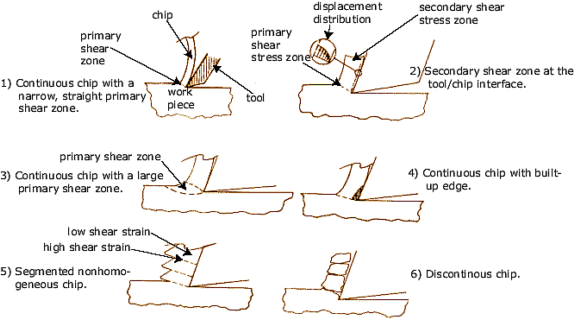| Chip Formation: Introduction |
|
Because of the importance of machining for any industrial economy, Machining Theory has been extensively studied. The chip formation process is the same for most machining processes, and it has been researched in order to determine closed-form solutions for speeds, feeds, and other parameters which have in the past been determined by the "feel" of the machinist. With CNC machine tools producing parts at ever-faster rates, it has become important to provide automatic algorithms for determining speeds and feeds. The information presented in this section are some of the more important aspects of chip formation. Reasons for machining being difficult to analyze and characterize can be summarized as follows:
Below are illustrated categories of chip types.
|


